Croatian Broadcast Exhibition: Zagreb Technical Museum Hosting Event Until October 12
August 26, 2021 - The Croatian Broadcast Exhibition hosted by Zagreb's Nikola Tesla Technical Museum (TMNT) offers visitors a chance to learn more about the rich history of radio and television in Croatia which led to the diverse multimedia world of today.
Named after the famous scientist Nikola Tesla, the Nikola Tesla Technical Museum (TMNT) continues to showcase the history of invention and technology. Since June, all the way up to October 12, the Museum has been and will continue to host an exhibition called ''Transmitter and connections – 95 years of broadcast in Croatia'', authored by TMNT's curator Goran Rajič. Marking 95 years of radio and 65 years of television in the country, the display is supported by Transmitters and Connections d.o.o.
''There is no doubt that broadcast, embodied in two iconic phenomena – radio and television, marked the 20th century and made way for today's dominance of multimedia, evident in the overall networking and convergion of communication technologies,'' reads the TMNT website.
They added that radio and television made significant contributions to society, from building democracy and pluralism to being symbols of mass consumer and pop culture.
''With a selection of representative objects from the Nikola Tesla Technical Museum and objects used in Transmitters and Connections d.o.o., we're paying tribute to the significant anniversary of broadcasting on Croatian soil, as well as the almost century-long effort of Croatian work and intellectual efforts in its quality,'' explained the TMNT website.
This selection includes various radio and television transmitters, televisions and radios used in Croatia, also accompanied by photos of the most significant locations across the country where transmitters are situated. In addition, the exhibition presents visitors with data that provides less known facts on the size and branching of the transmitters, as well as on the challenges of maintaining the broadcast network.
TMNT also reminds its readers that the first radio transmission in Croatia was achieved on May 15, 1926, by the hard work of the Radio Club Zagreb, and was produced by the German Telefunken company from Berlin. The same date, but this time in 1956, saw the celebration of the 30th anniversary of the radio on modern Croatian territory. Antennas placed on Sljeme, Medvednica's mountain top, saw the very first television broadcast. The most recent technological advancement in the Croatian broadcasting world was seen in 2017 when 16 radio stations started broadcasting on a digital signal.
Learn more about Croatian inventions & discoveries: from Tesla to Rimac on our TC page.
For more about Croatian history, follow TCN's dedicated page.
Science Faculty (PMF) Earthquake Reconstruction: Croatian Faculties Receive Aid
August 23, 2021 - The Science Faculty (PMF) Earthquake reconstruction money was received in July by the Croatian government and Education Ministry. The aid was given to other high-education and scientific institutes that suffered from the earthquake too.
With August concluding, the academic community is waking up after a summer break. Students are preparing for exams, and professors are grading those exams as both groups boldly look towards new wins and losses in October and another season of active higher education in Croatia. However, with faculties being low-key in the summer, one might have missed an important action in early July when prime minister Andrej Plenković and education minister Radovan Fuchs came to Zagreb's National and University Library. They delivered 42 contracts of assigning non-returnable financial aids to reconstruct infrastructure of higher education and scientific institutions hit by the earthquake. The total amount is 2,140,837,980 kuna, and Zagreb's University Faculty of Science (PMF) received a total of 160.988.403 kuna for its own reconstruction after the natural disaster first hit Zagreb on March 23, 2020, and later Petrinja on December 29, which was also felt heavily in the Croatian capital.
With the University of Zagreb being founded in the middle of the 17th century, teaching and research of natural sciences and mathematics, which led to today's PMF, can be found almost two years after the university was founded, on April 21, 1876. The faculty, in its current form of working, was established on June 8, 1946. Since then, PMF has worked on its educational and research contributions, whose excellence is recognized domestically and internationally.
„The Faculty designs and conducts relevant university studies and scientific research programs which are an integral part of the higher education process in the fields of biology, physics, geophysics, geography, geology, chemistry, and mathematics," says the PMF website.
Today, PMF has seven departments (Biology, Physics, Geophysics, Geography, Geology, Chemistry, and Mathematics), organized into 28 divisions. It has around 4000 students enrolled in undergraduate, integrated undergraduate and graduate, and graduate university studies within 35 study programs and about 1000 students at seven postgraduate studies and one postgraduate specialist study.
„It is less known that the PMF also comprises the Seismological Service and its seismological stations all over Croatia, the mareographic station in Bakar, the geomagnetic observatory in Lonjsko polje, and the green jewel located in the very heart of Zagreb – the Botanical Garden. And in the background of it all are nearly 500 scientists and teachers for whom you will not only be just another name on a sheet of paper but a truly personal and (hopefully) successful story about your future and ours“, explained PMF.
The earthquakes damaged PMF, particularly the buildings of biology and geography departments. Still, it is admirable that amidst its own trouble, PMF found a way to help students of the Faculty of Metallurgy in Sisak, which also took a heavy hit from the earthquake, by donating five new laptops for educational purposes.
As TCN previously reported, citizens of Zagreb had mixed feelings regarding how the city and the government handled the situation in Zagreb. However, Croatian Parliament MP Sandra Benčić from the Možemo Green-left coalition, while commenting on the victory of his party colleague Tomislav Tomašević on Zagreb elections, stated that the citizens he helped filling out paperwork for damaged homes needed to receive European funds for the reconstruction, for which Zagreb needs to apply by June 2022 to receive the aid.
With these moves by the new administration and the aforementioned aids for the high scientific institutions, the steps to recover Zagreb, the center of science, culture, politics, economy, and more in the Republic of Croatia are underway. But, it will still take time for citizens to recover fully from 2020's tragedies.
The results of education and science curiosity pay off. Learn more about Croatian inventions & discoveries: from Tesla to Rimac on our TC page.
For more about education in Croatia, follow TCN's dedicated page.
Iron Age Danube Route Recognised by European Council
August 20, 2021 - The Iron Age Danube Route is a new addition to the Croatian offer, relevant not just for tourism but for science, research, and education, and recognised by the European Council.
The Iron Age Danube Route addresses one of the most fragile, though imposing and attractive prehistoric archaeological phenomena, the Iron Age landscapes. Characterised by monumental structures, such as burial mound cemeteries, flat cemeteries, fortified hilltop settlements, and oppida, as well as elements indicating the complex organisation of space, Iron Age landscapes belong to the period between the 9th and the end of the 1st century BC, according to the official website of the Iron Age Danube Route Association (IADR).
This association was founded back in July 2020 with the goal of enhancing international scientific cooperation regarding the period of the Iron Age, as this is a period marked by an extraordinary corpus of movable and intangible heritage. The focus on the Danube region is, among other things, owing to this heritage being housed in numerous museums across the Danube region, including the most important regional and national institutions.
''Compiling the existing sources of knowledge and creating a strong interdisciplinary and international network of expert institutions from Austria, Croatia, Hungary and Slovenia in the fields of archaeology, cultural heritage protection, tourism, as well as local stakeholders, the Iron Age Danube Route Association was founded in July 2020 with the aim of the further development and management of the IADR,''
The Archaeological Museum in Zagreb is one of the founding partners of the association, and other institutions from Croatia include the Centre for Prehistoric Research, Kaptol County, Papuk Nature Park, and Faculty of Humanities and Social Sciences at the University of Zagreb. Other partners include museums and faculties from Hungary, Austria, and Slovenia, all bringing their top experts in the field to the table for the association to work.
And that work paid off. As reported by the Archaeological Museum in Zagreb's website, the European Council granted the culture route certificate to the Iron Age Danube Route which stretches through Austria, Bulgaria, Croatia, Hungary, Germany, and Slovenia.
''This is the first culture route of The European Council with its headquarters in Croatia“, said the Museum's website adding that the route is managed by the Association.
''The Iron Age Danube Route matched the criteria by the five priority fields of action by the European Council. These include cooperation in research and development, the progression of European heritage and history, educational exchanges, youth culture, engagement within the frame of the current cultural and artistic practices and sustainable cultural tourism development,'' explained the website.
The certificate is important as it enhances the overall visibility of the sight, allowing the public to become better informed about the area, and enriching the overall Croatian cultural and tourist offer, creating new opportunities both for business and for scientific and educational purposes.
Did you know Vukovar is located along the Danube river? Learn more in our TC guide.
For more about Croatian history, follow TCN's dedicated page.
Grgur Bučić: The Croatian Scientist Who Measured Hvar's Sunshine Hours
August 13, 2021 - You came to Hvar expecting sunny days and you weren't conned. Meet and thank Croatian scientist Grgur Bučić who started the weather station on Hvar, one of the first in Croatia, which measured how sunny Hvar really is.
There's nothing worse than when a traveller on a short holiday on the Croatian coast ends up stuck in their hotel room because of bad weather. Unless you want to risk bad weather sabotaging your Adriatic swimming experience, and maybe if you're lucky to get rescued by indoor pools, you should definitely play it safe and go to Hvar. Known for years as the sunniest Croatian island, there couldn't be a safer place to count on a rain-free holiday.
During my time in Hvar town, the forecast showed rain and uncertain weather on the coast, but even the couple of clouds that formed over Hvar quickly dispersed and probably headed over to the mainland, to Split or elsewhere.
In addition to swimming in the Adriatic, Hvar has plenty of heritage and things to see, like the Spanish Fortress (Tvrđava Španjola), lots of churches (such as St. Stephen’s Cathedral), its historical theatre (the oldest municipal theatre in all of Europe, by the way), an archaeological collection in the former Dominican St. Mark’s Church, and the Natural History Cabinet in the Hanibal Lucić Summer Residence – to name a few. In fact, Hvar boasts more UNESCO heritage than any other island in the world.
One of the other interesting sites is also the Former Church and Monastery of St. Veneranda. As Hvar heritage writes, the church was built in 1561 for the needs of Greek Orthodox sailors who were in the service of Venice. Today, the site serves as an outdoor cinema.
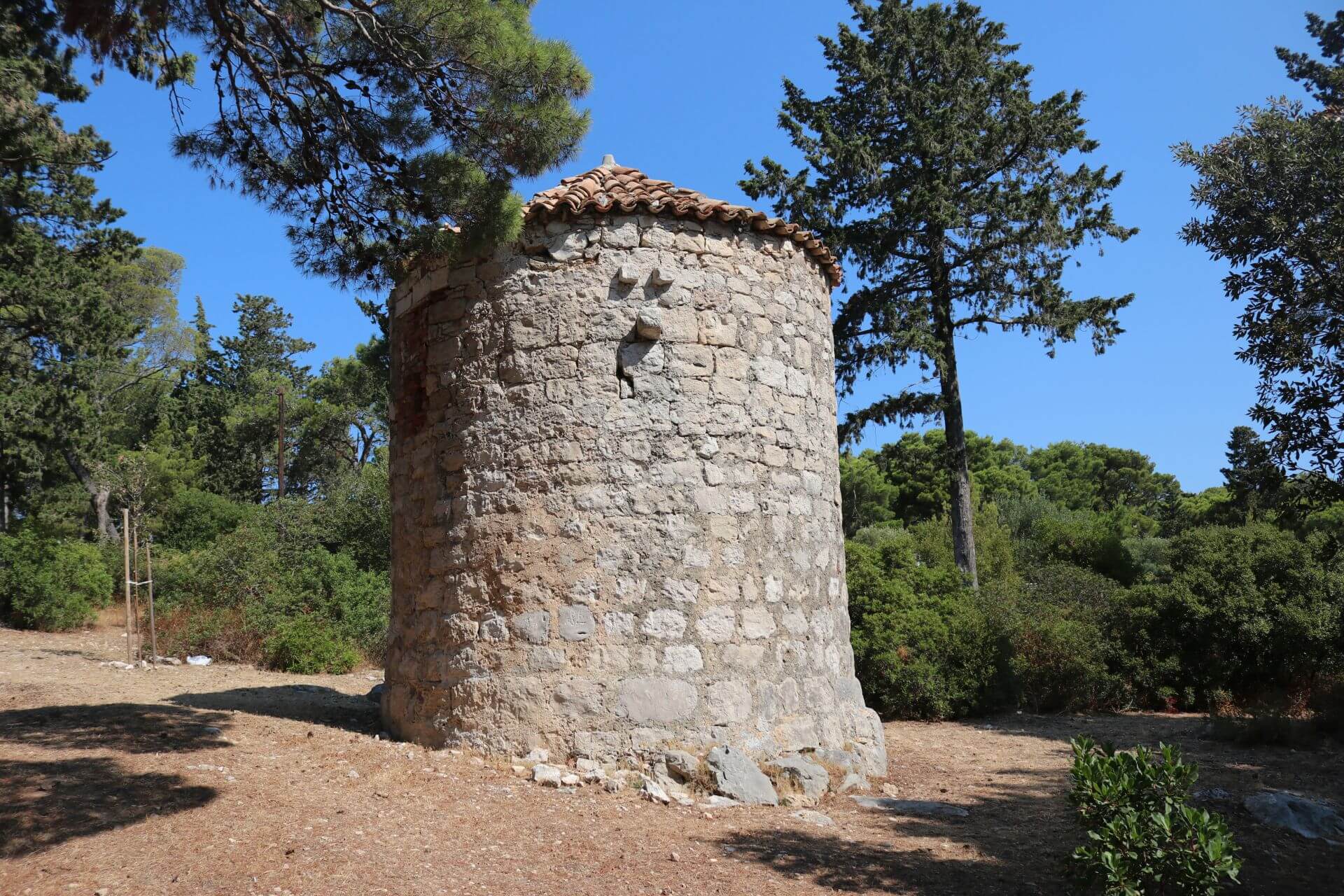
The former church tower, the former weather station © Nina Lelas
Right next to it, back in 1858, famous Croatian nature scientist Grgur Bučić established a weather station, one of the first in the entire country. Being part of the Austro-Hungarian monarchy at the time, the station was part of the Austrian network of meteorological stations. Thanks to the measures taken under Bučić's expertise, the sunny days of Hvar are not a market scheme to attract tourists in need of clear sunny weather, but an actually very well-advertised scientific fact. In addition, for his experiments with sponge development, Bučić received global recognition, and seven species of sponges, crabs, and fish were named after him. He published articles regarding meteorology and oceanography and also studied insects and marine life. He also pioneered numerous archaeological digs across Croatia, including on Hvar.
Back in 2018, as TCN wrote, the station marked 160 years of existence. Organised by the Hvar Town Library and State Meteorological and Hydrological Service, this celebratory event revealed some interesting historical moments from and about the station. These include polar lights, storms, falling meteors, earthquakes, vineyards destroyed by hail, sunken ships, and epidemics. In 1884, based on data from Bučić himself, climatologist Julius von Hann (often looked upon as the father of modern meteorology) published his work ''Klima von Lesina'' (The climate of Hvar town), the first-ever such book on a Croatian town or area.

Grgur Bučić © MuzejHvar.com
Today, the Bučić tower is locked, and the path to the church now serves as an outdoor cinema, without that many interesting things to be seen. Could the tower be renovated and showcase the instruments this pioneer station used in the past? Perhaps, and it would certainly be a cool addition to the already extensive offer Hvar has for its visitors.
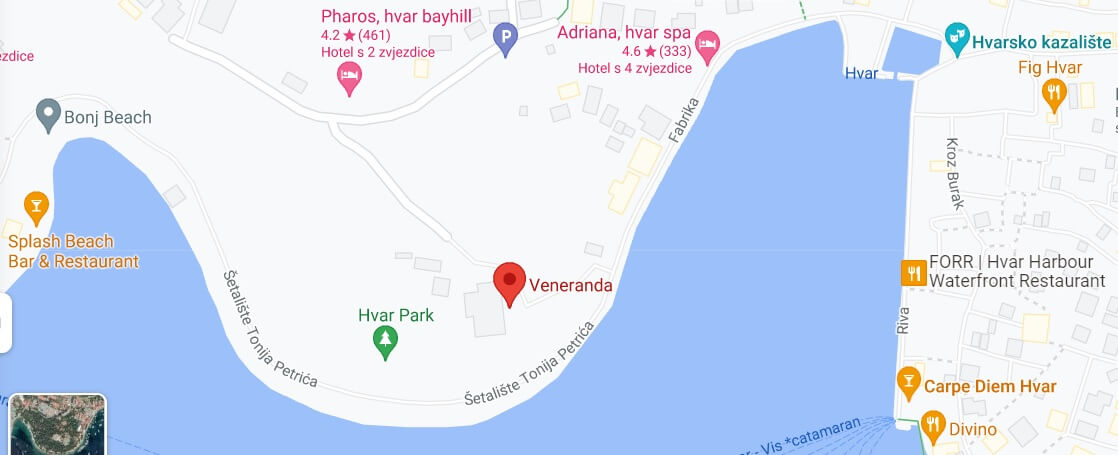
Veneranda, location of the station, screenshot / Google maps
While waiting to see what the future may bring, it's worth taking a look at this station, not far from the waterfront and the nearby beaches. Express some gratitude and dedicate a refreshing swim to Bučić himself, a brilliant man whose findings gave us scientific, statistical reassurance that Hvar is the sunniest place in all of Croatia.
Learn more about Hvar on our TC page.
For more about Croatian history, follow TCN's dedicated page.
Croatian Author Igor Pavela on Hospitality and His Scientific Book
August 12, 2021 - Croatian author Igor Pavela who wrote the first Croatian scientific book on hospitality, is currently waiting for the book to be translated into English. TCN reporter Ivor Kruljac met up with Pavela to discuss both the book, but also the current situation in the Croatian hospitality sector.
April 2021 saw the release of ''Excellence as a Standard in Hospitality Business'' (Izvrsnost kao standard u ugostiteljskom poslovanju), the first Croatian scientific book on hospitality in which author Igor Pavela explored what it takes to successfully run a business and ensure both an excellent offer and enjoyable atmosphere for the guests.
The book's author, Igor Pavela, has been in the hospitality business for the past 16 years. He has gained invaluable experience in various aspects and from multiple positions. Back in April, he was a manager in one of the largest American cruise ship companies and today works for the Maslina Resort in Stari Grad on Hvar island.
He has closely worked with top managers and CEOs of various big international tourism and hospitality companies in his rich career, and he also found time to train management and other employees with his educational material helping them to increase the quality of their overall standard. The educational materials Pavela has written for his training sessions eventually pushed him to write this book, now reviewed and praised by the academic community both in Croatia and in the wider region.
The book boasts a combination of his personal work experience and extensive scientific research encompassing marketing, communication and even ethics (to name just a few), and how one can go about applying it to hospitality sector success.
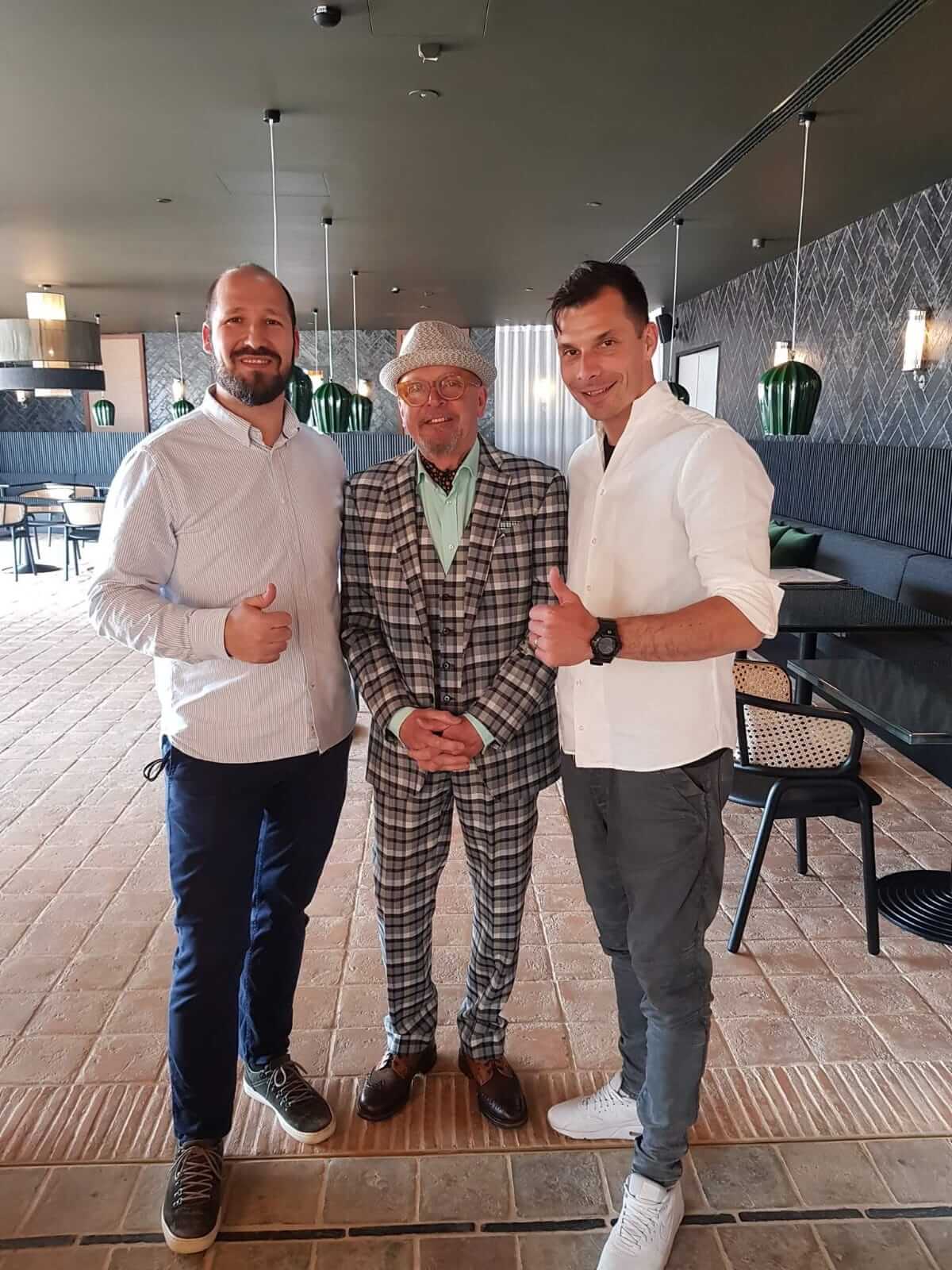
Maslina Resort management team. From left to right: Mario Kolumbic Maitre'D , Chris Edwardes as consultant, Igor Pavela Bar Manager © Maslina Resort
Ground rules in one place
With academic opinion being relevant for knowledge when it comes to scientific literature, Pavela, at the very start of the interview, also said that the first version of the book, which was constructed as his personal business manual, was reviewed by his close friends, colleagues, and ex-partners, all those who have been established in the hospitality business for decades.
''The first information I got as their feedback was that they'd never seen such valuable information presented in a way which is both easy to read and easy to implement. It combined the scientific research that provides the facts and my personal experience which I tried to pass on in the book like a tutor would in order to say what works and what doesn't,'' recalled Pavela.
Pavela pointed out that the hospitality sector encompasses a very broad range of occupations, and there are differences between cruise ships, fine dining restaurants, nightclubs, hotels, and other types of hospitality businesses. With that being said, there are also basic ground rules that are the same for every type of function. His colleagues who learned what works in business the usual way, by experimenting and seeing how things work out before changing and adapting things, rated the book in such a positive way, and Pavela looked more than happy with the impression his writing had had on others in his field so far.
With support from University College Aspira that both published and also held a book presentation for their former student, significant developments are happening for the book as it is currently being translated into English. With the global market not really having a scientific book of this kind under its belt yet, the options seem endless once the translation is complete. Ambitious but realistic, Pavela revealed further plans for the book.
''The book just recently came out in April (it could've come out earlier, but we waited for the unprecedented and catastrophic period for hospitality as a result of the pandemic to calm down). The translation will take around a month and a half to be completed by a professional agency that we hired, and after that, it will be reviewed. As the Croatian version was given to three doctors of science to be reviewed, it will also be reviewed by three very well-known and established names before going out onto the European market. They will, upon agreement, get an example of the book to review it and score it objectively,'' explains Pavela.
He continued by explaining that the book is now the subject of negotiations with a very known high-level sponsor in the hospitality sector. While not being able to reveal the name of the sponsor, Pavela says this sponsor plans to open an academy and to educate their staff based on Pavela's book, which is making its way to hospitality-related education in Croatia, from those in high school to those in higher levels of education. In addition, there is a plan to distribute the English version as an electronic book. The plan is to connect with big e-book distributors such as Amazon to make the book accessible globally, for students, professionals, those who want to start their business and those who are just curious readers with a desire to learn more.
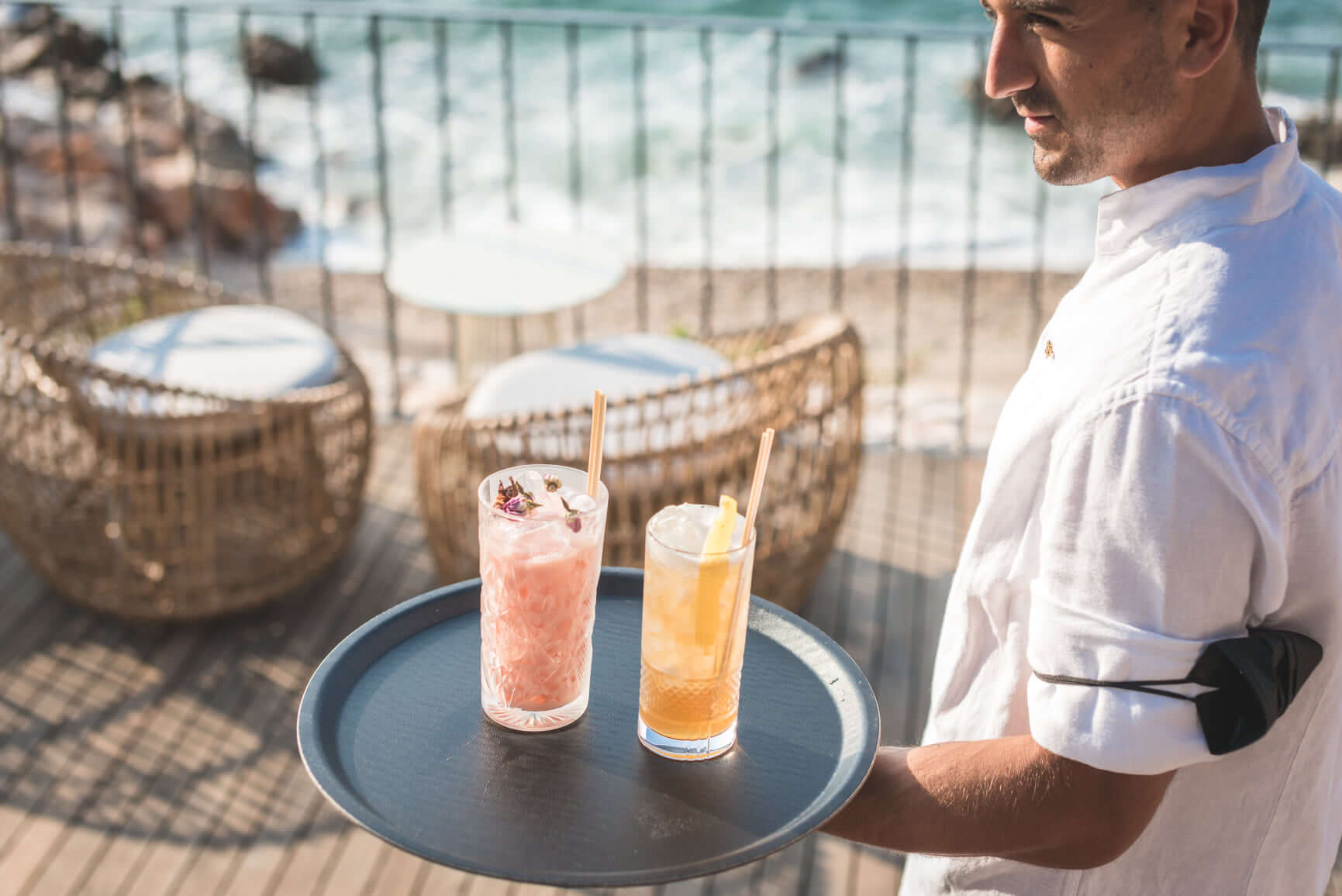
© Maslina Resort
Switzerland is the place for experimental physicists thanks to CERN, Japan is doing wonders in robotics, and American and British scientists are making significant historical contributions to the fields of sociology and anthropology. Maybe this book would position Croatia as a leader in scientific observations of hospitality. When asked about this, Pavela said that it is a wonderful idea, and his greatest desire.
"My first intention when I started writing this book was to collect all global experience, which is different, if not more advanced than what is garnered in Croatia alone. I wanted to bring it home because at the end of the day, this is my home and where my heart belongs. Croatia has natural resources that need to be used more, and that also means not just promoting them, but we should be on the level required to be the high-level destination to attract high-level clients from all over the world.
I think Croatia, unfortunately for years now, hasn't been at the required level, and there has been a sea of negative comments from guests as a result. There were good sides too (tourism has been growing more and more since the Homeland War), but from the side of science, we have to see the negative sides because that's something we need to look at in our analysis and research to see what is wrong and why something is wrong so that we can work on it,'' explained Pavela.
The up-to-date research needed to scientifically and successfully explore what works and doesn't work truly needs to be constant, and the spirit of that mentality is reflected in the fact the book already has references and findings in regard to COVID-19.
Hospitality isn't just business but a purpose, too.
When it comes to things that need to be worked on, Pavela pointed out that many people in Croatia who work in hospitality are students and people who don't really take much interest and aren't really educated in the sector, thus bringing down the level of the country's hospitality services in general.
Within twenty minutes of interviewing Pavela, it became clear that he talks about hospitality with the kind of passion that isn't unusual to see among journalists or maybe even lawyers and doctors for their fields, professions who are generally quite romanticised in pop culture and where workers in the field don't view it as a job to put food on the table, but rather a call to contribute to better future. However, it is very unusual to recognise such passion for hospitality among people. How does one find such a spark in an field most people only view as a side job to achieve some higher goal? I asked.
''In one specific moment, I saw hospitality from a completely different level. I was still involved in the operational part of the industry, the back of the counter, serving and having conversations with hundreds of people every day. At one point, I had this click in my mind where I realised that just as food and water are a necessity for the body, these places of socialising are food for the soul that will not disappear even as the world changes with all this technology,'' Pavela said, recalling how he first fell deeply in love with hospitality.
He looked around the beach bar where we sat with delight, which, if more people could recognise it, would no doubt make your morning coffee in a cafe be taken in with a completely different view.
In recognising the energy which takes place when socialising after a hard day at work or school, he saw all members of the hospitality sector, from the highest decision-making managers to the waiters, as actors all involved in the collective task of making socialising as good as it can be.
''Hospitality isn't just an economic transaction of buying a product, here we offer so much more. Our service can make someone's day,'' said Pavela proudly, reminding me of how business deals, relationships, friendship and so much more is formed in a great atmosphere of hospitality service, thus really making a difference to the world.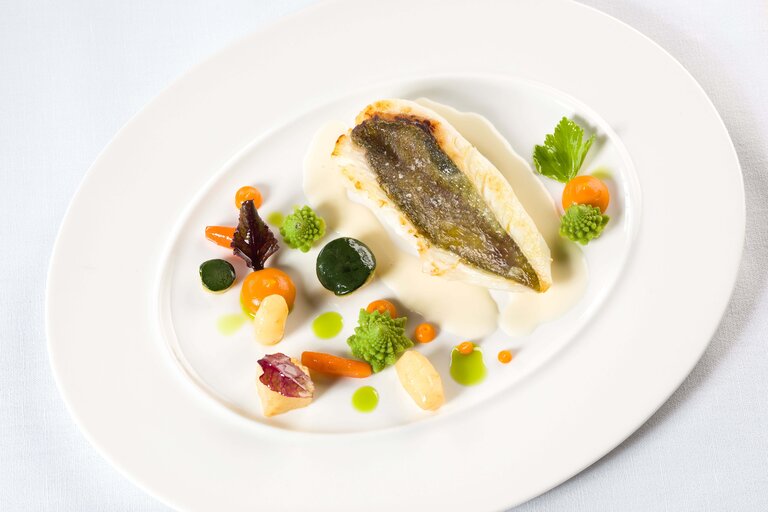
Maslina Resort's Mediterranean John Dory © Nikola Radovani
As you read through the book, Pavela stays true to his words, pointing out good examples but also bad ones from which other employees and owners can learn what to avoid. Despite positioning some of the aforementioned negative practices to his hometown of Split and the wider Dalmatia area, Pavela at no point mentioned a specific name or a venue that fitted any negative practices. Pavela is sure this doesn't damage scientific data and gathered knowledge, and his scientific objectives are evident in him not name dropping people or places that have good practices either. In this way, he avoided the potential accusations that his book is either paid trash talk or a paid word of praise for some business, which would put a serious strain on Pavela both as a scientific observer and as a hospitality professional.
''When you're writing something like this, it's a very sensitive thing. The purpose of the book isn't to call anyone out for doing bad things, and I don't think that should be in the book. If somebody does something bad and it ends up in the news or with them being sued, then there are other ways to learn about that. The book is about focusing on changing bad practices to positive ones, and even though I had specific places and names in my head, I didn't want to bring them out and sound unprofessional,'' explained Pavela.
''What I want is for those people behind positive and negative examples to recognise themselves,'' he said.
Solidarity should trump competition when building a destination.
In the end, this book of science and practice has an aim of helping others improve their own business. That wouldn't be weird if Pavela had already retired from the business, but with his active employment for Maslina Resort, an outsider's point of view might leave you thinking whether or not it is wise to ''spill the beans'' and all the tricks of the trade as direct competitors could out beat the master as the students of his findings and knowledge. That's a very logical question from outside, but Pavela only smiled with confidence as he assured me that this book's release would neither sabotage himself nor his colleagues.
''The beautiful thing about hospitality is there is something for everyone. The more types of hospitality we have present in our destinations, the better, because opening a new bar doesn't mean stealing guests from another bar. It means offering something different. Everyone can find something for themselves. Somebody will want to hit a brew bar. Someone will want a clubbing experience, and so on. Passing on knowledge is not damaging any of the places. The point is that we all grow together in terms of quality and the commitment to what we do,'' elaborated Pavela, revealing solidarity in hospitality which is hard to deduce from the guest's point of view.
As his book clearly elaborates on, it is wrong for a hospitality owner to try to catch everything and everyone with his offer. Specialising and targeting a particular audience (e.g. those who love quality food and wine, leaving out those who want cocktail bars as you focus on improving your gastronomic offer), along with investing in quality ingredients and keeping your workers happy are the key to success, as Pavela mentioned himself. These are just a few of the points you can find in the book, but in the end, it's best you read it for yourself here. Either in Croatian or you can wait a little longer for the English version.
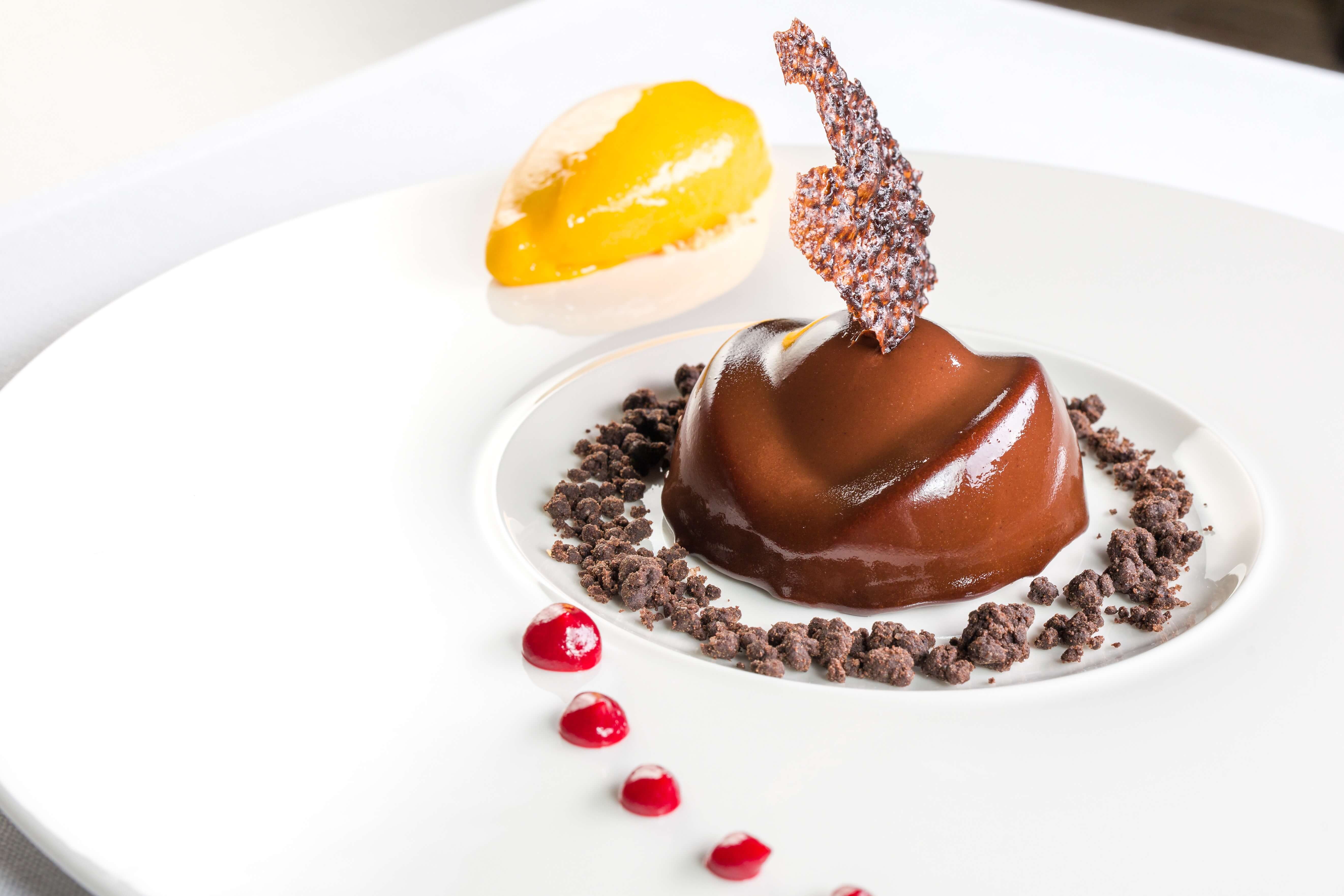
Maslina Resort's Chocolate Cherry Sphere © Nikola Radovani
It's worth remembering that science never sleeps, and with Pavela himself warning of this - the situation is changing constantly. Today's top formula for happy guests may be completely outdated tomorrow. Researching and learning are always welcome in order to show all those involved in this industry the way to providing the best service possible.
Learn more about Stari Grad on Hvar on our TC page.
For more about science in Croatia, follow TCN's dedicated page.
Croatia on G20 Summit: First Quantum Communication with Italy and Slovenia
August 6, 2021 - What the country lacks in terms of economy, it makes up for in science. This was proven during the Croatia on G20 Summit. Along with their counterparts from Slovenia and Italy, Croatia's Ruđer Bošković Institute (IRB) scientists conducted the first quantum communication, presenting new and safe communication technology.
Unfortunately for the Croatian economy, the country is far from being a member of G20, let alone the prestigious G7, but with the European Union being a member of G20, it's a bit like Croatia is also on the team, too.
Croatian businesses may still face issues, but Croatian science saves the nation's reputation, particularly the Ruđer Bošković Institute (IRB). As they reported in their press release, Croatia participated in the first public demonstration of quantum communication, along with Italy and Slovenia on the fifth of August. This transmission took place between Trieste, Ljubljana and the Croatian city of Rijeka, and thanks to their scientific expertise, attention was given to Croatia during the summit of the wealthiest countries on the planet.
Dr. Mario Stipčević (head of the IRB's photonics and quantum optics laboratory) and Dr. Martin Lončarić from the IRB handled the transmission from the Croatian side with the support of his colleagues from the Faculty of Transport and Traffic Sciences from Zagreb University and in collaboration with the OIV company which is enrolled in digital signals and networks.
''The quantum connection between Trieste (Italy) and Croatia's Rijeka-Zagreb knot is 100.5 kilometres long and is expanded from Rijeka to the capital of Zagreb via quantum induced communication. The first demonstration of its kind has been made possible with the cooperation of the Croatian academic community and industry,'' said Dr. Stipčević.
According to the website of PicoQuant, a German company dedicated to research and product development, quantum communication is a field of applied quantum physics closely related to quantum information processing and quantum teleportation.
''Its most interesting application is protecting information channels against eavesdropping by means of quantum cryptography,'' says PicoQuant.
The IRB explains that quantum communication satisfies the need for safe communication, which is a priority of every government worldwide.
''This technology achieves maximum security thanks to the quantum encryption that works on the photon exchange, which allows for the instant detection of hacking attempts,'' they pointed out from the IRB.
''Today, we're part of the cornerstone of the new European quantum infrastructure“, said Tommaso Calarco, the president of the European Quantum Community Network (QCN). He added this is the crown of the first phase of the Quantum Flagship programme which offers European Union citizens such privacy protection infrastructure.
Croatia, by all accounts being involved in the shaping of The European Quantum Communication Infrastructure (EuroQCI) Initiative, shows the country will not lack behind its other European partners.
''With the success in realising this demonstration, our scientists and experts broke the ice and paved the way to the realisation of quantum infrastructure in the Republic of Croatia,'' concluded Dr. Stipčević.
Learn more about Croatian inventions and discoveries from Tesla to Rimac on our dedicated TC page.
For more about science in Croatia, follow TCN's dedicated page.
Roma in the Homeland War: More Research on Defending Croatia Needed
August 5, 2021 - When talking about the fight for Croatian independence, the public often tends to forget about the contributions of minorities such as Roma in the Homeland War. TCN reporter Ivor Kruljac reminds us of a 2019 book that researched Roma participation in defending Croatia, which is a great starting point for further research today.
Croatia is marking the 26th Anniversary of Operation Storm, a military action that, on August 5, 1995, marked the liberation of occupied territory (apart from Eastern Slavonia, which was returned to Croatia later on during peaceful reintegration).
Victory Day is filled with pride, but for some, there is a shade of bitterness as a result of the questionable treatment of civilians and prisoners of war that to this day continues to divide the opinion of the Croatian public and remains a topic of numerous historical debates.
As noticed by the Youth Initiative for Human Rights (YIHR), things changed significantly in 2020. This came as a result of moves made by Croatian politicians, not only with words but also by their honouring of Serbian civilian victims in Varivode and Gruber.
''Last year's anniversary was marked by changes in the official policy towards Operation Storm (Oluja), known in Croatia as Victory Day (Dan Pobjede) and Homeland Thanksgiving Day (Dan Domovinske Zahvalnosti). August 2020 saw the public space filled with messages about reconciliation, dialogue, the importance of facts, condolences for war crime victims, and appeals for a conversation about different views on Operation Storm in both Croatia and Serbia,'' said YIHR.
With 2020 evoking feelings of sympathy for all victims of the Homeland War, a significant step was also made back in 2019 to recognise that not only ethnic Croats fought for the freedom and independence of their country.
“We defended Croatia Too: Roma People in the Homeland War“, is a monography by Borna Marinić which was presented in 2019. It was the first publication to gather info on the contribution made in the war by the often discriminated against and socially isolated minority in Croatia. The presentation was held in the "Zvonimir Home" of the Croatian military in Zagreb. The publication was the first to really delve into the contribution of Roma in the Homeland War.
The promotion gathered many VIP attendees of political and military Croatian authorities at the time. Marinić, a historian and the editor of the website ''Dogodilo se na Današnji Dan'' (It Happened on This Day), pointed out that not a lot is known about the actions of the Roma in the Homeland War, and this lack of documentation was the biggest problem he had to tackle when it came to verbal storytelling from witnesses.
''I visited Roma veterans and their commanders as well as other relevant people across Croatia, recording their statements and testimonies about the Homeland War,'' said Marinić. His research saw more than 50 people interviewed, but the total count of Roma people who participated in the war still remains unknown.
Dr. Martin Previšić pointed out while reviewing the book that it doesn't provide readers with a linear story of the war's history, but rather an authentic view on the hell of wartime and the solidarity which trumped very many differences.
''Vukovar, Baranja, Pakrac, Novska, and Karlovac were places in which Croatia was defended, but they were also places where Roma people gave their tribute to that same defense,'' said Previšić.
Veljko Kajtazi, a member of the Croatian Parliament, elected as a representative of the Roma community, attended the representation, delighted to see that this important but unexplored subject was finally being tackled by a researcher in the first-ever book published on the topic. He pointed out, however, that this book cannot be viewed as an encyclopedia as it didn't record the experiences of all Roma people, nor does it have all of the information from all fronts, but it is a terrific base for further research.
''I'm grateful to my fellow Roma people who shared their stories and whose faith is the cornerstone of this book. I felt the obligation for Roma people to come forward and present themselves in a different light. Roma people, in large numbers, defended Croatia and gave their contribution to the defense in key moments,'' concluded Kajtazi.
Kajtazi talked about the need for Roma people to begin presenting themselves in a different light and stated that there are definitely numerous issues caused by stereotypes that Roma people are involved in crime and as such can't be trusted.
As TCN previously wrote, The Human Rights in Croatia 2020 Overview report by Human Rights House Zagreb noticed how Roma people in Croatia still face very many obstacles in achieving their rights, which include employment, access to services, and adequate living standards, and there is still segregation in the Croatian education system too.
Additionally, the global issue of COVID-19 brought new problems for Roma people in regard to vaccination against COVID-19, a topic both Kajtazi and the Croatian Public Health Institute (HZJZ) spoke about for TCN.
Roma people helped Croatia during the darkest of its days as a new and young country. Respecting and working on actively including Roma people in our society as equals is the very least Croatia can do in return.
Learn more about Croatian politics and history from the 1990s on our TC page.
For more about science in Croatia, follow TCN's dedicated page.
Salty Adriatic Sea: New Research Raises Concerns
Aug 5, 2021 -The salty Adriatic Sea became saltier in 2017, and even in 2021, the salinity levels are the highest ever recorded, warns the Ruđer Bošković Institute (IRB).
With known salty areas such as Pag, you would expect the Adriatic sea to be very salty, and it is. However, over the years, it has become even saltier, as the Ruđer Bošković Institute (IRB) stated.
As the IRB wrote in a press release, a Croatian scientific team collaborating with their Italian colleagues published a study that shows so far unrecorded levels of salinity in the Adriatic. Their work was published in the prestigious Frontiers in Marine Science Magazine titled ''Observation, Preconditioning, and Recurrence of Exceptionally High Salinities in the Adriatic Sea“.
As the IRB explained, it was in 2017 around Palagruža where the Adriatic sea's salinity reached a record of 39.1 per mille.
''In addition, with minor oscillations, the high salinity in the first 200 metres of depth was kept within the central part of the southern Adriatic, and it has remained the case until today. For example, at this moment, the salinity levels in the central part of the southern Adriatic is over 38.8 per mille in the whole water gauge, and 39.15 per mille by the surface,'' added the IRB.
This measurement was the lead for the scientists to conduct further research that incorporated various available data acquired via multiparameter probes, autonomous ARGO buoys, remote-controlled submarines, and satellites that measure sea level's surface. The data from an oceanographic model of the Mediterranean sea (which combines satellite and other measures, thus giving the most quality 3D view of the oceanographic field) was also used.
Sure enough, the salinity rise has been explained. On one hand, the enhanced flow from the Middle East and the Ionian sea are to blame, but on the other, there are changes in the Adriatic sea itself.
''The processes (in the Adriatic sea) occur on a scale of several days to a decade, and have four key elements,'' they explained from IRB.
The first one concerns Adriatic-Ionian bi-modal oscillation affecting physical and biogeochemical conditions in the Adriatic through a period of 5-10 years, which, in the last decade, has caused a serious influx of salt and oligotrophic waters (waters which are too low in nutrients to support life).
The second process concerns low river flows due to the low amount of rainfall, while the third process concerns the enhanced amount of solar energy on the sea's surface during summer and early autumn. Finally, with the weather warmer than average and with very little wind, the water gauge is divided into the hotter surface level and colder central and bottom levels. This leads to the fourth process that includes vaporising and the loss of water from the sea surface.
''Three out of four of the aforementioned processes have already been documented in the Mediterranean as a consequence of climate change that in the future will bring warmer, drier summers and as a consequence, more heat and the higher salinity of the sea surface,'' they warned from IRB. They added that this is a threat to marine life which depends on the temperature, the level of salinity, and other factors that will be sabotaged with these changes.
With the Adriatic sea and its marine life being one of the treasures Croatia has, the global response to climate change must start giving results as fast as possible, and Croatia cannot afford to miss out on contributing for the sake of the country and the world in general.
Learn more about beaches in Croatia on our TC page.
For more about science in Croatia, follow TCN's dedicated page.
Honoring Ivo Banac: Almanac By His Colleagues and Friends Published
July 29, 2021 - In honor of Ivo Banac, an almanac by his friends and associates was recently published to reflect on this famous yet controversial academic and showcase the research Banac inspired in others.
The first anniversary of Croatian academic Ivo Banac's death coincides with publishing an almanac of scientific work in his honor.
As the Ivo Pilar Social Research Institute reported on its website, the motivation for the book is not Banac's death, but rather the 70th birthday Dr. Banac celebrated in 2017, when the honoring symposium was arranged for him. Ivo Banac sadly died on June 30, 2020.
The almanac titled "Liber Amicorum" (which is Latin for Book of Friends) gathered rogether authors who were friends, colleagues, and students of Ivo Banac. Their work showcased in this book consists of opinions and takes on various aspects of the life and career of Ivo Banac, as well as pieces of research, texts, and work encouraged and inspired by Banac himself, whom the authors wanted to share first and foremost with him.
The Ivo Pilar Social Research Institute, the Croatian Catholic University, and Hrvatska Sveučilišna Naklada (Croatian University Edition) are the publishers of the book.
"The Gruž Symposium was a happy and joyful event after which many had the need to say much more is expected from Ivo. Only three years after cheerful toasts, we faced the professor's sudden, fast and unquestionable departure. One of the ways we tried to deal with this loss is working on this book“, said Ivo Pilar Social Research Institute at the event that was organized in 2017 in honor of Ivo Banac.
Born on March 1, 1947, in Dubrovnik, Ivo Banac began his educational journey in Catholic institutions in New York (his father was a sailor, and the family moved to the USA). He finished Jesuits Gymnasium and received a BA at Fordham University, and then moved to Standford for his MA (1971) and Ph.D. (1975). He was an academic, historian, politician (founder of the Liberal Party in 1997), and a writer (among nine books, he had a column in the Jutarnji List daily newspaper). He was a regular professor at the Faculty of Humanities and Social Sciences, University of Zagreb, and was also a professor at Yale in the US and Budapest, Hungary. His most famous book was „National Question in Yugoslavia“ (published in 1984). He was a member of the Croatian Helsinki Committee (2007), and for a brief time in 2003, a minister in the government lead by a social democrat prime minister Ivica Račan.
Biografije.hr pointed out Banac's controversy for being one of the most known converters in modern Croatian history. From being a member of the New left organization Students for a Democratic Society (SDS), to a liberal, then right-wing. Nevertheless, his political turmoils, his friends, and colleagues remember him for being a great scientist and intellectual.
''This book reflects a plethora of interests that characterized Banac's work, but also the interests and efforts of his students, the new generation to whom Banac was their mentor and had high hopes for,'' concluded the Ivo Pilar Social Research Institute.
Learn more about Croatian politics and history from the 1990s on our TC page.
For more about science in Croatia, follow TCN's dedicated page.
How Far Can Zagreb Grič Cannon Fire? Ideal Conditions View of the Fire Range
July 21, 2021 - Ever wondered about the Zagreb Grič Cannon fire? TCN reporter Ivor Kruljac played with Google maps to provide an answer in ideal conditions.
While Zagreb Grič Cannon did not shoot at the time of writing this article, it is still one of the key symbols of Zagreb, and memories of its bang during midday is a vital part of the living in Zagreb experience.
As TCN previously wrote, the Grič Cannon was first introduced on January 1, 1877, and was located at the State's Meteorology department, back in the times when Croatia was part of the Austro-Hungarian Monarchy. It wasn't until 1927 that it was moved to Lotršćak, where it is situated to this day. In addition, the current cannon serving this purpose is actually the fifth to do the job and was donated to Zagreb by the Yugoslavian National Army (JNA), during Universiade.
Apart from signaling noon, the old legend says the Grič Cannon also served a defensive purpose. As TCN previously wrote, legend has it that the Ottoman commander Hasan Pasha (Hasan Paša) settled his army along the coast of the Sava river, in today's area of Novi Zagreb. He was preparing to cross the river and invade the city, but before that, he was about to have lunch, and Zagreb fired a cannon in the Ottomans' direction, close to Hasan, blasting a chicken he wanted to eat. The shot scared the hell out of the Ottomans, and they retreated, leaving Zagreb totally intact.
The legend itself is part of a book titled ''The Grič Cannon legend'' in which writer Dubravko Horvatić has gathered 20 Croatian legends, and the book is a mandatory book report title for Croatian pupils in the third year of elementary school.
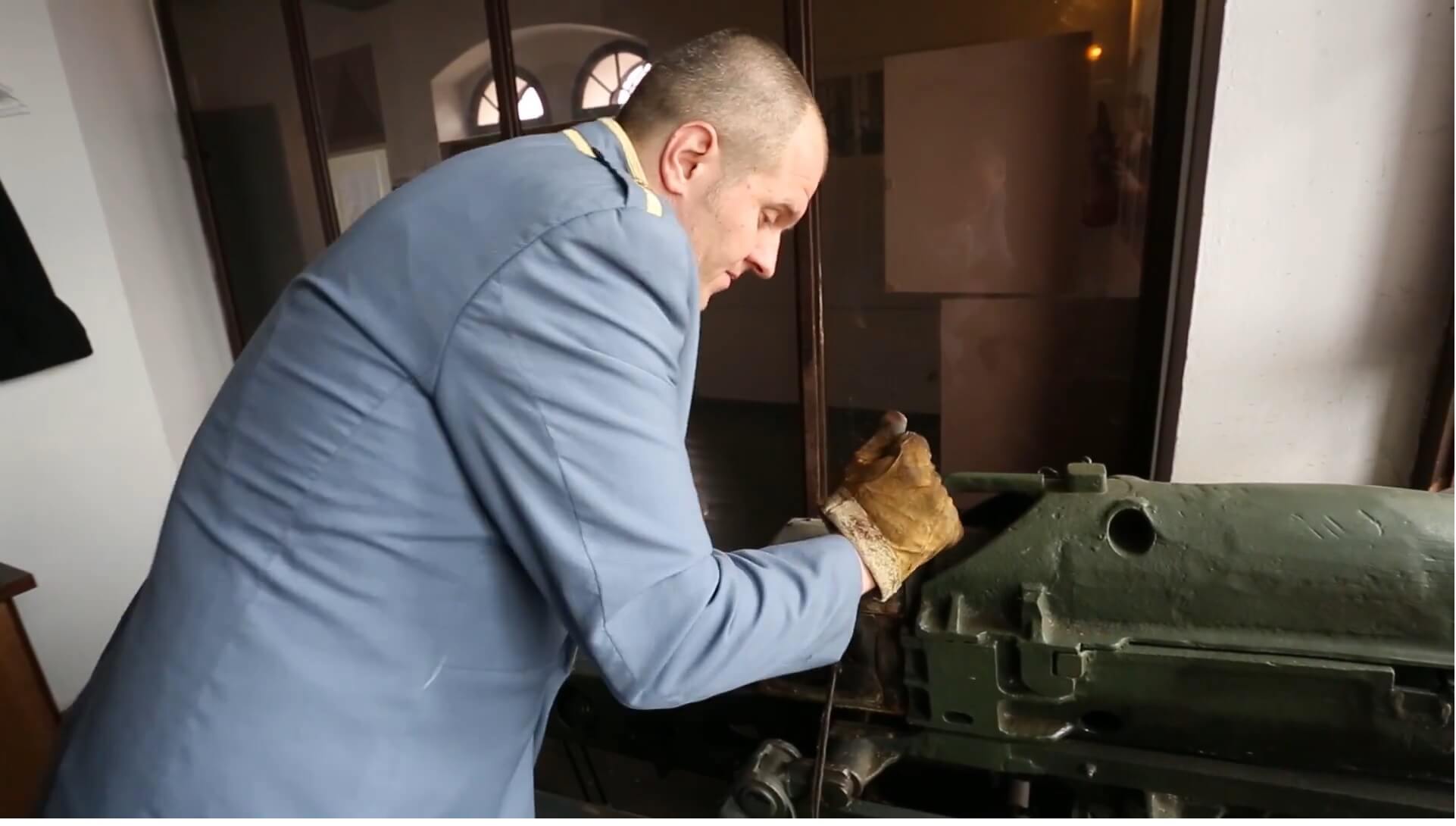 Preparing the cannon, screenshot / PIXSELL
Preparing the cannon, screenshot / PIXSELL
Legend vs facts
With the story taking place way back in the 16th century, it's obvious the tale is just a legend as the cannon wasn't introduced until the 19th century. Still, it's a cool story, and a bit of a twisted mind can't but help think: what's the range you could actually shoot with the Grič Cannon?
As the Wikipedia page says, and as a member of the Zagreb Tourist Board in Lotrščak tower confirmed to this sleuth reporter, the current cannon's range is 7,929 metres (almost eight kilometres), and the sound of the blast has a solid 140 dB.
Legend says Hasan Paša was on the coast of the Sava river, which means he was in southern Zagreb, and sure enough, the Grič cannon is facing south from Lotrščak. The cannon floor also has windows looking in each direction, meaning you could move the cannon to north, west, or east.
When playing with Google maps distance measuring tools, you can see that the smallest distance between the Sava river and Lotrščak is, give or take, about 3,1 kilometres. So, the current cannon, under the right angle, could easily make that shot.

The distance between Fort Lotrščak and Sava river, screenshot / Google Maps
Apart from the possibilities of buildings and hills messing up the shot, there are other things that need to be taken into consideration. As the Department of the Army U.S. Marine Corps identified back in 1996, in their manual, there are many factors that affect artillery fire.
Muzzle velocity, projectile weight, range wind, air temperature, air density, even the rotation of the Earth, not to mention the overall condition of the barrel, all of which are challenges that could limit the cannon's full potential. And yes, Google maps isn't really the most precise tool on the planet, but let's take a shot in the dark and see how far the Grič cannon could actually fire (keep in mind these projections are made solely based on the maximum range, and the factors aren't taken in account but are mentioned for the sake of trivia knowledge).
South! Aim! Fire!
Let's start from the cannon's current position. Assuming no buildings, hills, or anything else gets in the way, and you're a physics genius that managed to isolate yourself in Lotrščak with live ammo and achieve a clear straight shot, your cannonball makes an impact all the way in line with Donji Čehi (but a bit away to the east from that place). Donji Čehi, along with Gornji Čehi, used to be independent villages but are today part of the City of Zagreb. With only 1,72 km2 of length, the place is inhabited by 232 residents, based on a 2011 census.
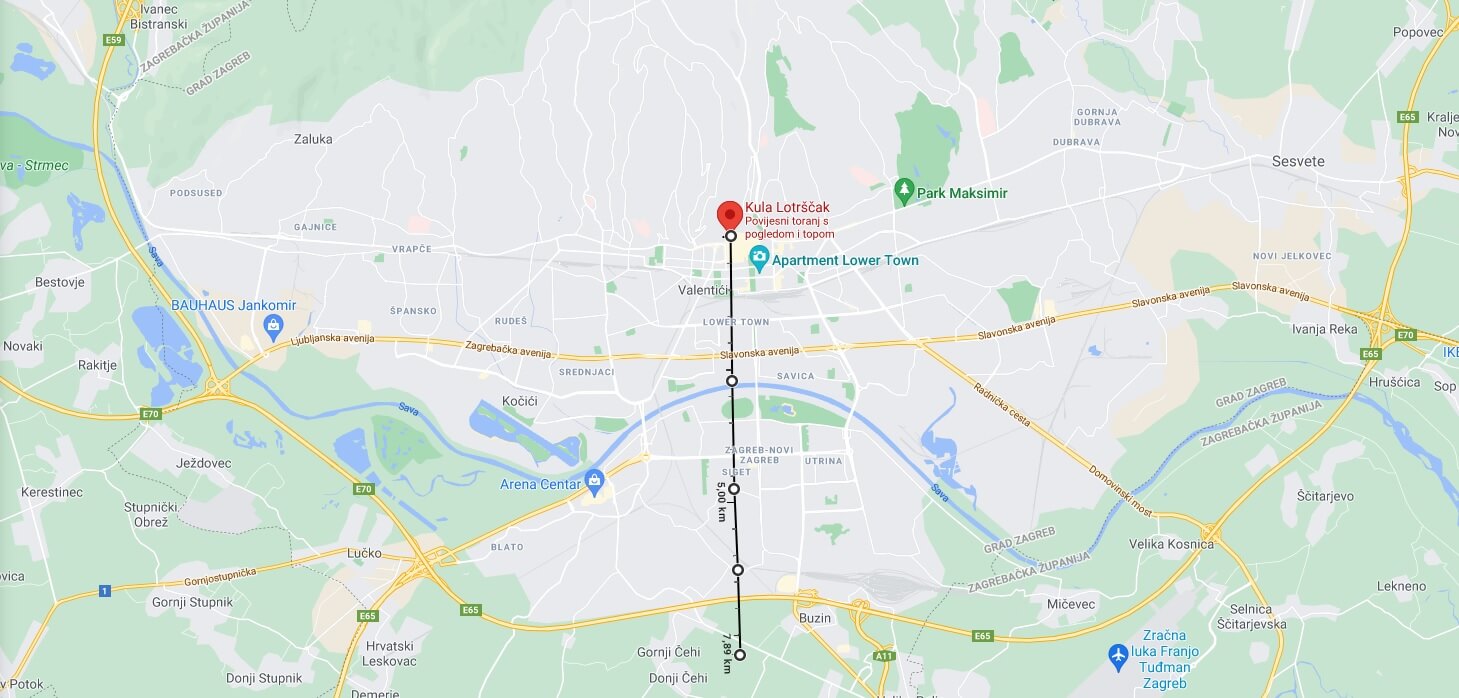
Grič Cannon maximum range to the south, screenshot / Google Maps
West! Aim! Fire
Continue clockwise and set your cannon to take a shot towards the west, with a range of little under eight kilometres. You can score all the way to Krnska street in Gajnice. Krn is both a name of a mountain and a peak (2244) in neighbouring Slovenia. The mountain is a part of the Triglav National Park in Slovenia (and if this side note makes your attention turn to Slovenia, be sure to check our friends at Total Slovenia News). Gajnice is a neighbourhood in Zagreb that is inhabited by around 10,000 residents. The neighbourhood is notorious for its pretty lousy connection with the rest of the Zagreb, and local residents often complain about infrequent buses that connect them to Črnomerec from where they can travel to the city centre. Well, at least, the centre doesn't aim at them with a cannon.

Grič Cannon maximum range to the west, screenshot / Google Maps
North! Aim! Fire!
The new target, or perhaps better to say lucky shot, lies towards the north. Don't worry about Medvednica mountain getting in the way of a clear shot towards Zagorje, as the range isn't long enough. The shot will hit Medvednica mountain, more precisely, to the close proximity of Tusti Vrh. This location is 648 metres above sea level and serves as a stand for a communication station with some antenna polls. But, there's no need to shoot the place up and destroy a lovely piece of nature, which also serves as an important social role in regards to telecommunication. Instead, you can visit the place as the Gračani trail leads there.
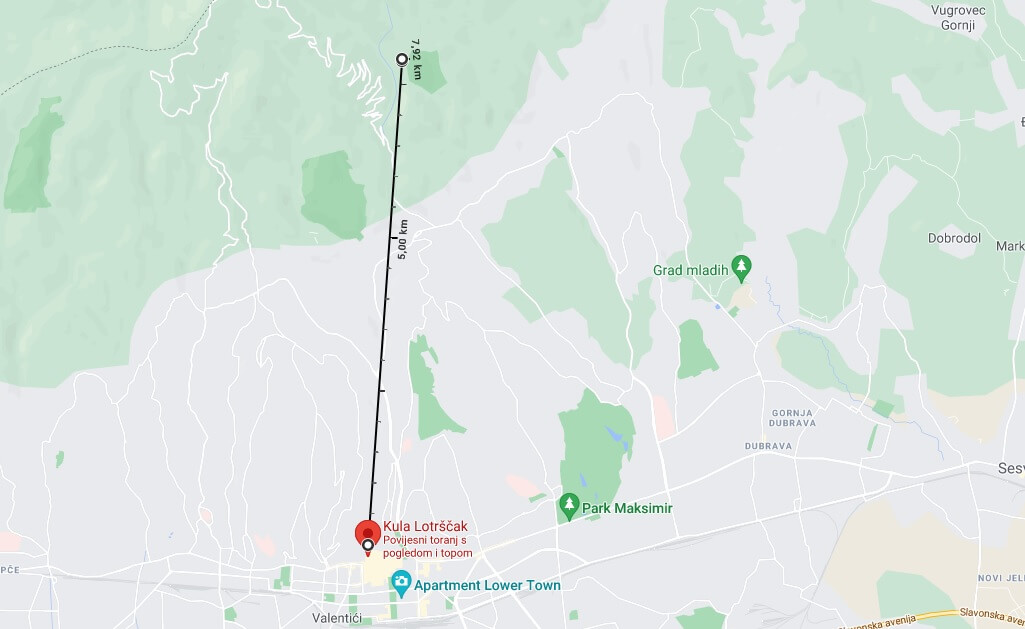
Grič Cannon maximum range to the north, screenshot / Google Maps
East! Aim! Fire!
Finally, it's time to ruin someone's day in east Zagreb (fortunately, no person was hurt during these simulations in reality). Specifically, this applies to whoever lives in Retkovec III near Bruma Interijeri d.o.o., a company specialised in woodwork.
Petkovic is a neighbourhood that is part of the Dubrava district. It's mostly a residential place, like much of eastern neighbourhoods considered to be a bit of a rough area to live in. Still, things aren't as bad as they were as before.

Grič Cannon maximum range to the east, screenshot / Google Maps
Shooting blanks
Again, it's worth noting these projections aren't accurate science and imply conditions which are perfect. Of course, in an ideal world we wouldn't need firearms and everyone would be living in peace. In reality, where these ideal conditions don't apply, residents of the aforementioned areas, but also citizens in general, can be relaxed, as the ranges are irrelevant.
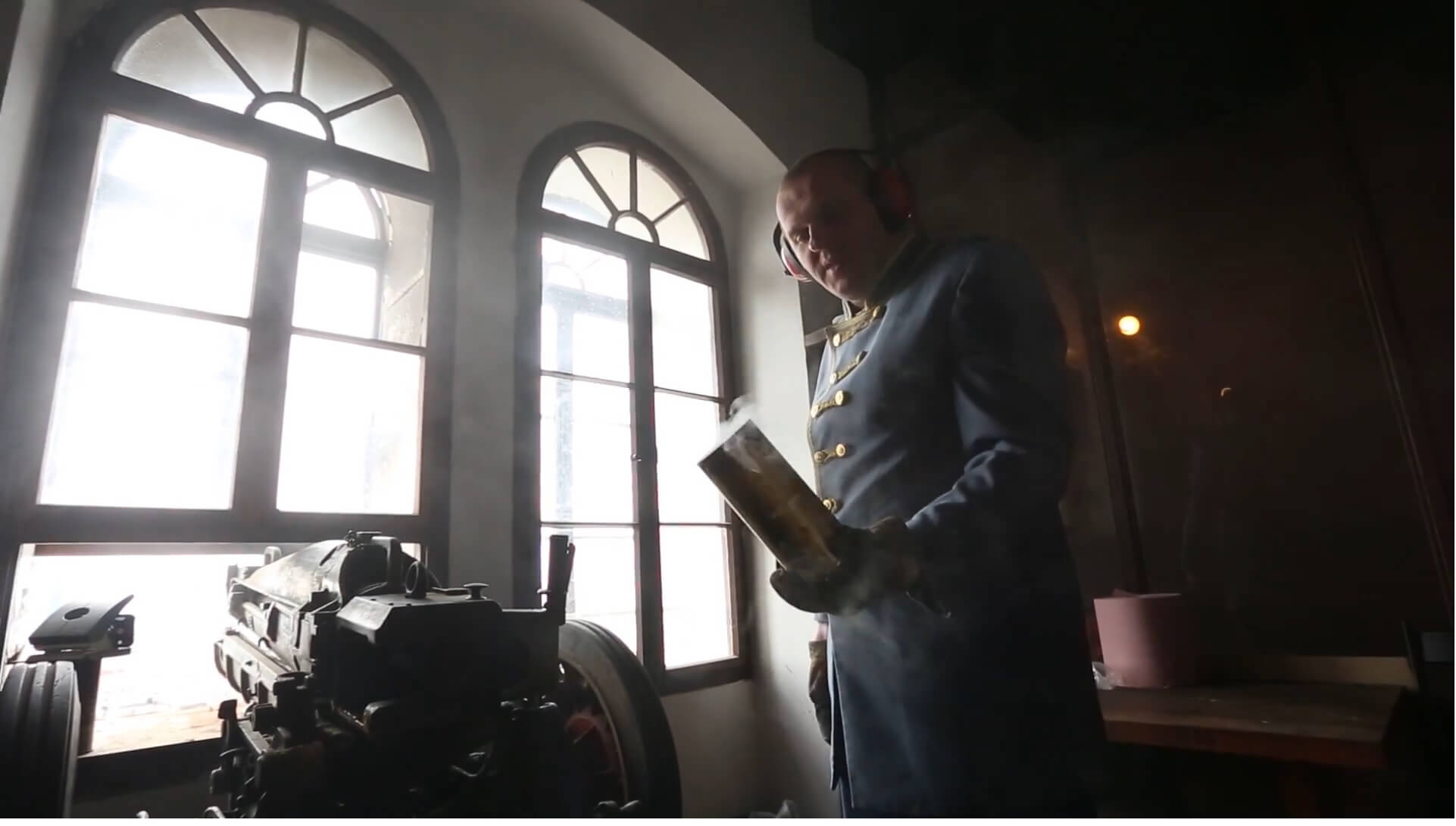 Shots fired aftermath, screenshot / PIXSELL
Shots fired aftermath, screenshot / PIXSELL
''It's worth noting the cannon is modified, and it can't fire live ammo,'' warned the Zagreb TB official, who was a bit puzzled as to why I would even ask her for the potential range of a weapon overlooking the Croatian capital from Fort Lotrščak. But, as I'm sure any researcher will confirm, scientific curiosity often calls for asking controversial questions.
Learn more about Zagreb on our TC page.
For more about history in Croatia, follow TCN's dedicated page.


